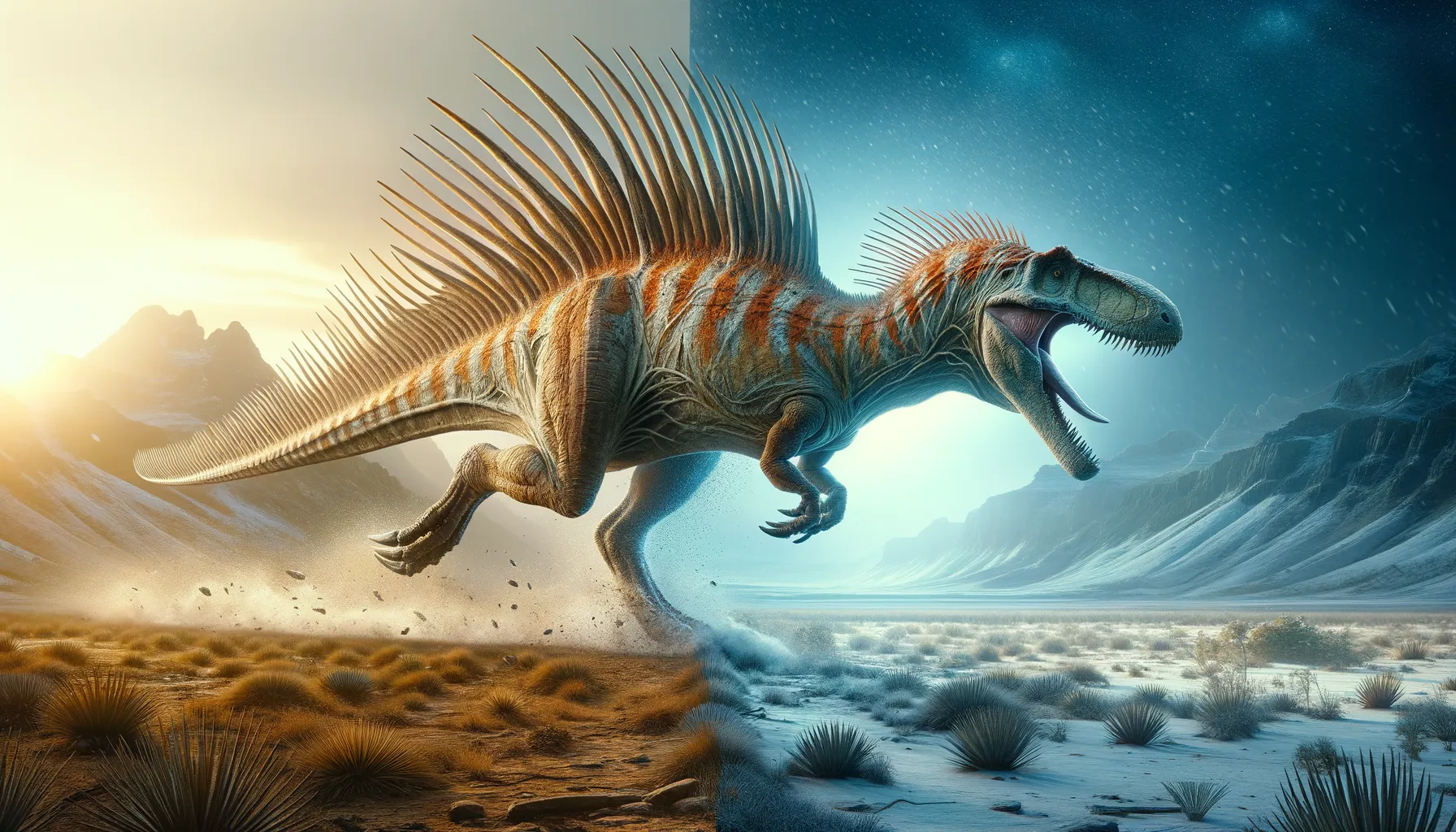
Altispinax
The sleek hunter with towering spines.
Period
Cretaceous
Length
Approximately 30 feet long.
Height
Approximately 8 feet tall at the hips.
Weight
Estimated to be around 1 ton.
Altispinax was an intriguing theropod dinosaur known for the distinctive elongated spines on its back. Its fossils suggest a predator built for speed and agility, capable of unexpected bursts to capture prey. This dinosaur roamed the Earth during the early Cretaceous period and is primarily known through fossil remains found in Europe. Despite being one of the lesser-known theropods, Altispinax presents an exciting glimpse into the diverse world of prehistoric carnivores.
Diet
Altispinax was a carnivore. It would have preyed on smaller dinosaurs and other animals available in its habitat. Its sharp teeth indicate a meat-based diet.
Hunting
Altispinax likely hunted alone, relying on stealth and speed for catching prey. Its elongated spines might have helped it intimidate competitors or prey.
Environmental challenges
The early Cretaceous period presented various challenges, such as fluctuating climates and competition for resources. Altispinax had to adapt to periods of scarcity when prey was hard to find. The environment would have consisted of diverse plant life, requiring Altispinax to navigate through dense forested areas at times.
Speed
Likely moderately fast for short distances.
Lifespan
Its lifespan is currently unknown.
First discovery
First discovered in 1832 by German paleontologist Friedrich von Huene.
Fun Facts
- Altispinax is known for its distinctive long neural spines, which give it a unique appearance similar to a mini stegosaurus.
- It lived during the Early Cretaceous period, around 130 million years ago, in what is now Europe.
- Altispinax was a carnivorous dinosaur, likely preying on smaller animals in its environment.
- Though originally thought to be a species of Megalosaurus, Altispinax was reclassified as its own genus due to its unique spine structure.
- The name 'Altispinax' means 'high spines', referring to the prominent vertebral spines along its back.
- Fossils of Altispinax have been found mainly in England, making it a part of the rich dinosaur history of the UK.
- Despite its intriguing features, Altispinax is known from only partial remains, leaving many aspects of its life and biology a mystery.
Growth and Development
Like many theropods, Altispinax probably hatched from eggs and experienced rapid growth during its juvenile years. Its distinctive back spines likely became more pronounced as it matured. The growth rate and development of these spines are not fully understood due to limited fossil evidence.
Habitat
The habitat of Altispinax included forested regions and open plains. These areas offered ample cover for a predator of its kind. It would have shared its environment with various herbivorous dinosaurs and smaller carnivores.
Interaction with other species
Altispinax likely had to compete with other predators for prey. It might have been both predator and prey within its ecosystem. Interactions could include conflict over territory or hunting grounds.
Natural lifespan
Exact lifespan data is unavailable but estimated at several decades.
Reproduction
Altispinax likely laid eggs, as seen in other theropods. Nesting sites, however, have not been conclusively found. Parental care levels are not well-documented, but some theropods were known to guard their nests.
Social behaviour
It is not clear if Altispinax was solitary or social. Limited evidence suggests potential solitary hunting. Social interactions might have been limited to mating and territorial disputes.
Fossil locations
Fossils of Altispinax have primarily been found in parts of Europe. Additional findings in Germany have provided further insight but remain relatively incomplete. Its exact range is still a subject of continued paleontological research.
